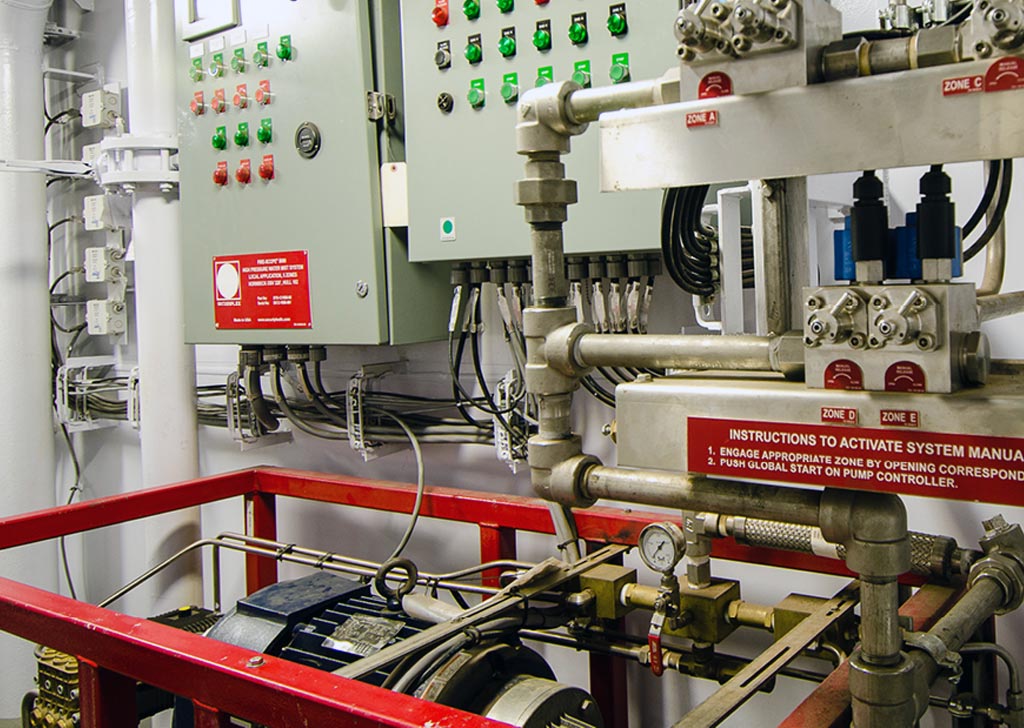In the ever-evolving landscape of fire safety, Water Mist Fire Suppression systems have emerged as a game-changing technology. These innovative systems are gaining traction across various industries due to their effectiveness, efficiency, and environmentally friendly nature. Let’s explore why Water Mist Fire Suppression systems are becoming increasingly important in certain applications.
Understanding Water Mist Technology
Water Mist Fire Suppression systems work by releasing a fine spray of water droplets, typically less than 1000 microns in diameter. These tiny droplets create a mist that can quickly absorb heat, displace oxygen, and effectively suppress fires. The key advantage lies in the large surface area of the water droplets, which allows for rapid heat absorption and evaporation.

Advantages in Specific Applications
The expanding range of applications for Water Mist Fire Suppression systems demonstrates their versatility and effectiveness across diverse environments. As technology continues to advance and regulations evolve, we can expect to see these systems deployed in even more innovative ways, further cementing their importance in modern fire protection strategies. Water Mist systems are used in a variety of applications as discussed below:
Heritage Buildings and Museums
Water Mist systems are ideal for protecting irreplaceable artifacts and historic structures. Their minimal and clean water usage significantly reduces the risk of water damage to priceless items. These systems can be discreetly installed, preserving the aesthetic integrity of heritage sites. They’re particularly valuable in areas with delicate materials such as ancient manuscripts, paintings, or textiles.
Marine Environments
The versatility of Water Mist systems makes them excellent for various marine applications:
- Engine Rooms: Providing rapid fire suppression in confined spaces with high-value equipment.
- Accommodation Areas: Protecting passenger and crew quarters on ships and offshore platforms.
- Vehicle Decks: Safeguarding areas with high fire loads due to multiple vehicles.
- Bilges: Addressing fire risks in hard-to-reach lower areas of ships.
- Gas Turbine Enclosures: Offering protection for sensitive power generation equipment.
Data Centers and Electrical Equipment
Water Mist systems are well-suited for protecting sensitive electronic environments.
- Data Centers: Fire protection for some of the highest-value enterprise assets.
- Server Rooms: Providing fire suppression without the risk of extensive water damage.
- Electrical Substations: Offering protection in areas where traditional water-based systems might be excessive.
- Telecommunication Facilities: Safeguarding critical communication infrastructure.
Bio-Tech / Pharma Environments
Water Mist Systems maintain sterility standards while providing effective fire protection, crucial for regulatory compliance in pharmaceutical production.
- The systems’ rapid cooling ability and non-toxic nature make them particularly suitable for preserving temperature-sensitive biotech materials and ensuring personnel safety.
Industrial and Manufacturing Spaces
Water Mist systems find applications in various industrial settings:
- Paint Lockers: Addressing the specific fire risks associated with flammable paints and solvents.
- Generator Rooms: Offering rapid fire suppression for critical power backup systems.
- Machinery Spaces: Providing localized protection for high-risk equipment.
Transportation Infrastructure
These systems are increasingly used in transportation applications:
- Subway Systems: Providing fire protection in underground spaces with limited water access.
- Tunnels: Offering effective fire suppression in long, enclosed spaces like the Channel Tunnel.
- Airport Hangars: Protecting large hangars with valuable aircraft and equipment.
Energy Sector
Water Mist systems are ideal for applications within the evolving energy landscape:
- Lithium-Ion Battery Energy Storage Systems: Addressing the unique fire risks associated with large-scale energy storage systems.
- Solar Panel Installations: Safeguarding inverter rooms and other electrical components of solar farms.
- Wind Turbines: Protecting the nacelle and other critical components of wind energy systems.
- High voltage transformers – indoor and outside, 115KV Type.
Cultural and Entertainment Venues
These systems are valuable in spaces that host large numbers of people:
- Theaters & Concert Halls: Providing fire protection without risking damage to acoustic treatments or historical interiors.
- Libraries and Archives: Protecting valuable collections of books and documents.
- Art Galleries: Safeguarding valuable artworks from both fire and potential water damage.
Residential High-Rises
Water Mist systems are gaining popularity in tall residential buildings:
- Individual Apartments: Offering localized protection with minimal water usage.
- Common Areas: Protecting lobbies, corridors, and amenity spaces.
Special Hazard Areas
Water mist systems can be tailored for unique fire risks and special hazards:
- Chemical Storage Facilities: Addressing fires involving various chemical compounds.
- Waste Treatment Plants: Providing protection in areas with potential for methane buildup.
- Food Processing Facilities: Offering fire suppression that doesn’t contaminate food products.
In conclusion, Water Mist Fire Suppression systems represent a significant leap forward in fire safety technology. Their ability to effectively control fires while minimizing water damage and environmental impact makes them an increasingly important option in many applications. As we continue to prioritize both safety and sustainability, the role of Water Mist systems in fire protection strategies is likely to grow.
However, it’s crucial to remember that no single fire suppression method is perfect for all situations. The choice of fire protection system should always be based on a thorough risk assessment and compliance with local regulations. As technology evolves, Water Mist systems will undoubtedly play a pivotal role in shaping the future of fire safety across various industries. Talk with Hiller to learn more.
